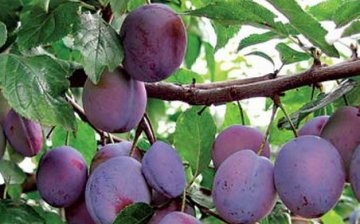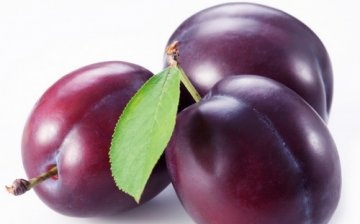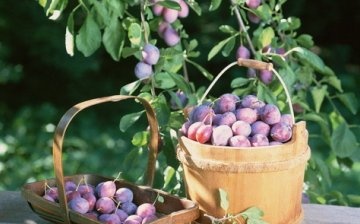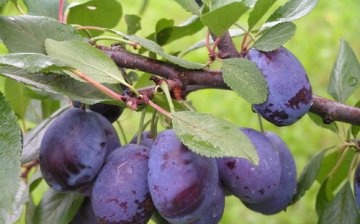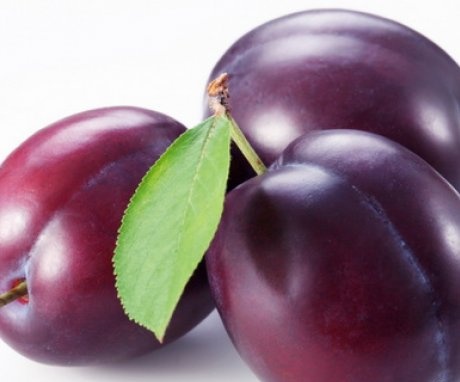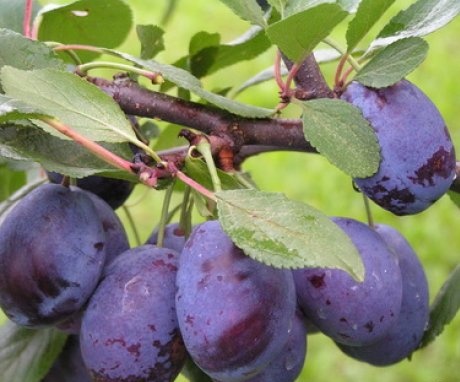Plum - is it a fruit or a berry really?
If you are interested in a question related to whether a plum is a fruit or a berry, then we can definitely say that the first option is absolutely correct. Therefore, if you hear that someone calls a plum a berry, feel free to defend the opposite position.
Content:
So, if you want a plum tree to appear on your summer cottage, you need to prepare for growing it. Let's say right away that the appearance of the first juicy fruits will have to wait 3-4 years. But the next 10 years will be the most fruitful for you.
Plum varieties
Before deciding to buy a plum tree sapling, it is advisable to familiarize yourself with the information on the varieties of plums. After all, plums come in early, middle and late ripening periods, and each of them, in turn, has many varieties. In addition, there are varieties of plums bred specifically for central Russia, resistant to severe frosts and pests... The most common early ripening varieties are:
- Morning. Fruits are oval, large, yellow-greenish, weighing about 30 g;
- Record. Fruits are oval-elongated, large, blue-violet in color, weighing about 27-30 g. In terms of taste, it is one of the best varieties of plums.
The most famous varieties of medium ripening plums are:
- Blue gift. Fruits are oval, medium-sized, dark purple, weighing 14-17g;
- Sukhanovskaya. Fruits are round, medium, reddish-purple in color, weighing about 20 g.
Late ripening plum trees in gardens are represented by such varieties as:
- Renklode Tambov. Fruits are round, medium-sized, purple in color, weighing about 18 g. Fruits are quite resistant to rot, at temperatures up to +5 degrees they are stored for about 75 days;
- Memory of Timiryazev. Fruits are ovoid, average size, yellow-reddish, weighing about 20 g.
Plum, the varieties of which are listed above, have a high winter hardiness. Therefore, they need to be planted in the cold regions of our country. If the climate is warmer and more favorable, then you can give preference to the Volga beauty, Hungarian Moscow or Eurasia-21.
Plum planting rules
Landing plums, like all other fruit trees, begin with soil preparation. The main goal is to improve the properties of the soil to a depth of 60 cm.To do this, dig a hole with a diameter of 100-150 cm and a depth of 60 cm.For the next plum tree, a hole is dug at a distance of at least 6 m.With more frequent planting, the trees will not have enough light, they will bloom poorly and produce poorly as a result. In addition, dense plantings are subject to frequent pest attacks.
The soil, dug from the upper fertile layer of the earth and enriched with compost, is poured into the pit (it is strictly forbidden to introduce fresh manure). They trample the ground along the periphery of the pit, and a plum sapling is placed on the formed mound.
A peg is placed at a distance of 10 cm from the tree, preferably from the south side: in this case, it will shade the young trunk from the bright rays of the sun. The root collar should rise 5 cm above the soil surface. When the soil settles, the tree will sit in the ground as it grew in the nursery. Attention should be paid to the fact that planting too deep is the cause of poor fruiting of any tree.
Basic plum care
The most important factor in the development of plums is crown formation. Pruning begin to carry out at a daytime temperature of at least -3 degrees and continue until sap flow begins. Pruning consists of shortening and thinning. The wood of plum trees is brittle and soft, therefore, during the formation of the crown, the main (skeletal) branches are chosen with a large slope angle and at a considerable distance from each other.
Annual shoots are shortened in order to awaken the buds to grow and to weaken the lateral shoots. Thin the crown in order to access light to the inside of the crown and remove crossed branches.
Feeding plums with organic fertilizers is carried out once every 2 years during the autumn digging of the soil around the tree. Nitrogen fertilizers are applied annually in early spring, and potash and phosphorus fertilizers - in the fall.
Young plum trees need watering every 10 days. Adult fruit-bearing trees are watered during flowering, enhanced shoot growth and 2 weeks before fruit ripening. The last watering supplies the plum fruits with the moisture necessary for their juiciness and enhancement of their palatability.
If we recall the main beneficial features plums, then we can say that the composition includes the so-called anticyanins, which fight the formation of malignant cancer cells. Plums are useful for kidney diseases, and the presence of riboflavin in fruits helps to improve protein metabolism in the body and strengthen the nervous system. The fruits contain iodine, iron, potassium and manganese, vitamins A, C, B1, E and other useful substances that are so necessary for our body.



